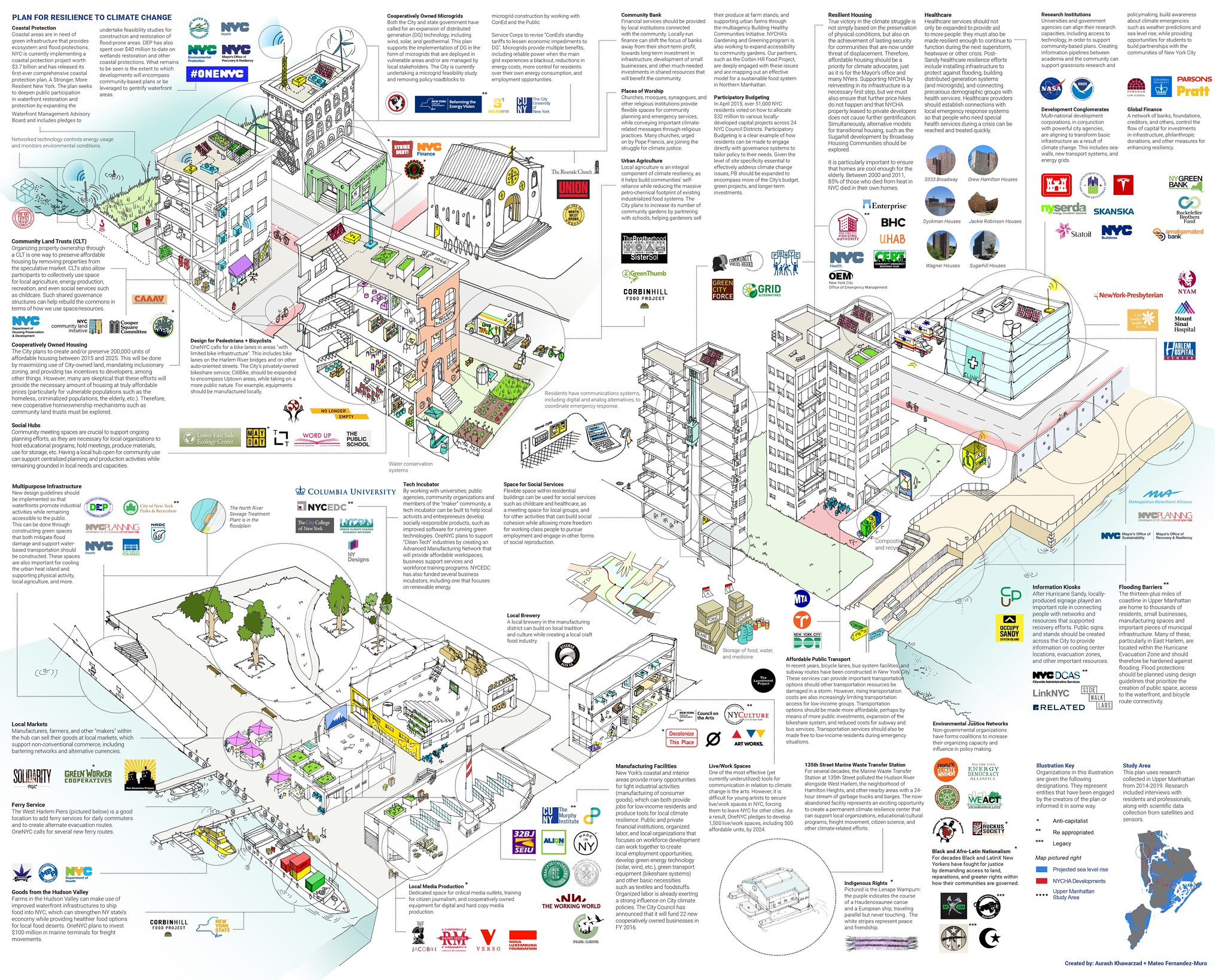Urban Planning Projects
The NMCA is a comprehensive illustrated vision and technical research project for urban development in Upper Manhattan. It is based on community workshops that occurred between 2013 - 2018 and that were led by organizations based in Harlem and broader New York City. These materials present a detailed vision for the future that makes the environment cleaner while preserving neighborhoods and bringing greater socioeconomic justice to the people. The plan and book were designed by Aurash Khawarzad and Mateo Fernandez-Muro.
Download the illustrated plan here and download the technical report here.





This map calculates the threat of climate change displacement and identifies potential displacement zones. Read more about the map and see a high resolution version here. Published in 2020.
View here. Below you will find A People’s Climate Plan for New York City? This pamphlet was released on September 20th 2019, in solidarity with the week of Climate Strike actions that will took place in New York and across the world. The pamphlet, considered a living document, emerges from the work of the Climate Action Lab from the Center for the Humanities at The Graduate Center, City University of New York. It crystallizes a year-long series of workshops with activists, researchers, and artists intended to reimagine climate politics through the lens of the city as both the frontline impact zone and the source of grassroots alternatives informed by the imperatives of climate justice. Devised in a spirit of radical cooperative research at the juncture between the public university and urban social movements, this pamphlet is not aimed at putting forward a single programmatic plan for the city—hence the question mark at the end of the title, intended to signal an ethos of both critical interrogation and radical imagination. Instead, it provides a snapshot of our work over the past year and its underlying principles in the hope that it can function as a vehicle for sharing research, developing questions, proposing ideas, and building relationships that could in turn contribute to city-wide popular planning processes in New York City and beyond that could help generate a People’s Climate Plan.
Context Sensitive Solutions (CSS) was a technical assistance program that sought to implement new transportation designs that promote greater environmental sustainability. The project was administered by the Federal Highway Administration (FHWA) and the Project for Public Spaces (PPS), where Aurash worked as a planner and led this body of work. Technical assistance was provided during planning workshops and with collaboratively developed design documents. The program also included an online clearinghouse of best practices that was used by FHWA regional offices and planning professionals. Three of the technical assistance projects are below:
<
>


